Native British Plants & Trees
February 18th, 2022 | Categories
We have a some wonderfully beautiful plants and trees that grow in and are native to Britain. Many people don’t realise that 80% of the plants we sell are grown in Britain, something we’re very proud of. Lots of which are sourced nearby which supports local producers, and in turn means that customers can choose from the freshest possible stock which hasn’t travelled far from nursery to garden centre.
We love native British plants and trees. The array of beautiful vegetation we have in Britain is quite astounding. Sometimes they can be overlooked for other more exotic choices, but we have some truly beautiful and eye-catching plant life and trees that wouldn’t look out of place in the finest gardens.
Why Go for Native Plants & Trees
When you plant native plants and trees not only do you support a lot of British growers, but you also support our native biodiversity too. They’ll bring more wildlife to the garden; a whole host of pollinators, insects, birds and more have evolved with our native vegetation so they’ll appreciate new opportunities for buzzing around, feeding, hunting, and sheltering. Native plants are also a good option because they have adapted to the local climate and soil conditions where they naturally occur. Generally speaking, this means they don’t require as much fertiliser and need fewer pesticides than ones that originated elsewhere in the world though there are some exceptions. Additionally, native British plants and trees are a good option for adding interest but cutting down on overall workload in the garden. They could replace part of a lawn, adding interest but also cutting down future time spent just on mowing. Compound this with the earlier point that they need less attention than other plants, and you have a great option for people seeking more of a low-maintenance garden that still looks fantastic.
Definition of Native Plants & Trees
Native plants and trees are defined as those that colonised Britain when the glaciers melted following the last Ice Age some 10,000 years ago, and before the UK was cut off from mainland Europe. Others that have been brought to the country but have escaped into the wild are known as naturalised. Native and naturalised plants are grown in nurseries up and down the UK.
Native British Plants
There are over 1,600 native plants in Britain, but don’t worry, we’ve picked some of the more popular ones to highlight below. Many of these are ideal for creating lovely cottage gardens for their bright, bold, and vibrant blooms.
Primrose
One of the most popular and recognisable British native flowers. The pale-yellow spring blooms are lovely against their green foliage but there are also many other variants and hybrids that share the “primrose” name.
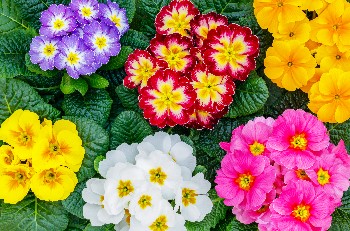
Corn Chamomile
Also called “Field Chamomile”, a lovely small daisy like flower with white petals and yellow centres, usually growing together in masses of clumps and creeps as it grows. When crushed they give off a pleasant apple-like scent.
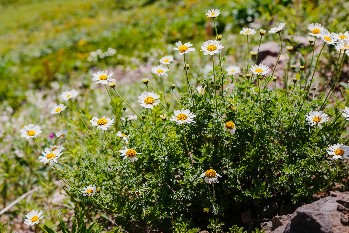
Kingcup
Kingcup or Marsh Marigolds have large, vibrant and pretty looking yellow flowers and a yellow centre, which are made even more eye-catching on it’s green stems and foliage. They don’t grow too large and prefer damper conditions, like next to a pond.
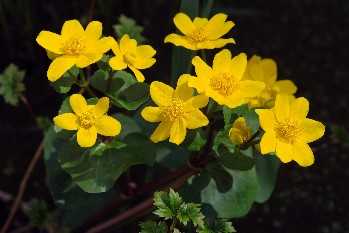
Dog Rose
A dense, fast-growing plant that has attractive blooms of pink flowers in summer. They are also quite prickly, so work well as a hedge. They’ll attract all manner of pollinators too with their rich reserves of nectar and pollen. In certain places it will grow so dense as to allow for shelter for smaller animals.
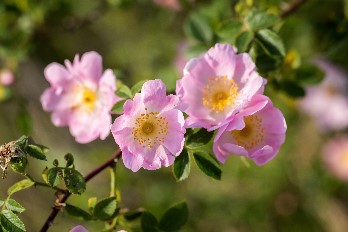
Honeysuckle
Specifically, Honeysuckle – Lonicera periclymenum as there are other non-native honeysuckle variants. It is one of the most visually interesting native British plants. Also possessing such a lovely, sweet scent especially in the warm summer evenings. Visually it’s quite hard to explain, they have been called trumpet shaped, that turn orange-yellow and have a red or pink flush too. They also produce clusters of red berries.

Foxglove
A great unique looking plant that grows upright with many tubular pinkish purple flowers. They look great grown in groups and will also attract bumblebees.

Forget-Me-Not
A very pretty and popular plant with flowers ranging in colour from pale blues to blueish purples. They have white or orange centres and stand out very well from their green foliage. They represent never-ending love.
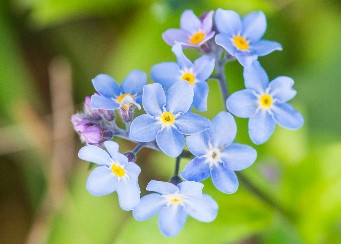
Ragged Robin
Quite a remarkable yet dainty looking flower, with slim usually pink petals on a long thin stem. It doesn’t mind damper conditions and will attract lots of pollinators.
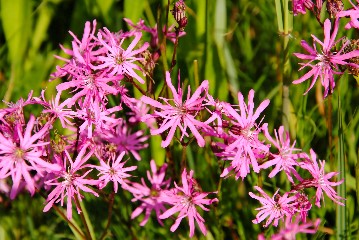
Scarlet Pimpernel
Not the character, but the lovely eye-catching plant with orange flowers and delightful pink centres. There are red variants too which are equally beautiful. It does well in poor soils and will sprawl out over the ground.
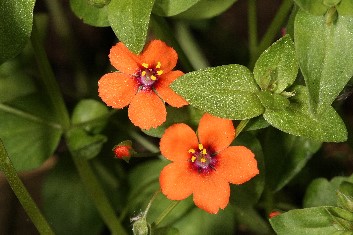
Stinking Iris
Quite an eye-catching plant, with lengthy interest. In Spring it blooms with lovely blue to purple flower and in summer produces vibrant orangey-red berries on its dark green foliage. Perhaps deserving of its name as when crushed it gives off an unpleasant odour.
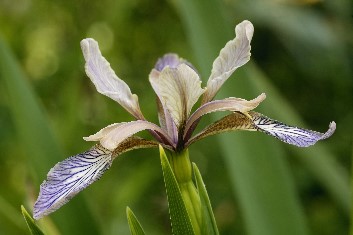
Stinking Hellebore
An evergreen plant with dark green leaves on a thick stem, with a lighter colour of green drooping cup shaped flower. Perhaps a bit unlucky to have the name “stinking”, but probably get it from the strong scent they give off when crushed.
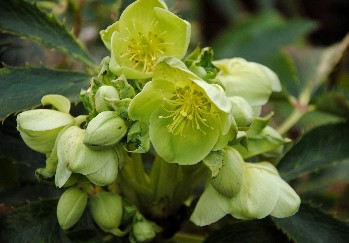
Oxeye Daisy
Lovely tall dainty looking daisies but with larger flowerheads that are happy planted in any soil so long as it gets a decent amount of sun.
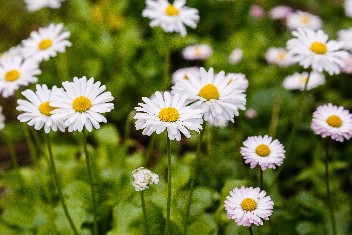
Wood Anemone
A pretty spring flower associated with ancient woodlands. It is low growing plant, with white petals and distinctive yellow anthers that protrude forwards from the centre. The foliage is a dark green which makes the white flowerheads pop. A good choice for shadier areas.
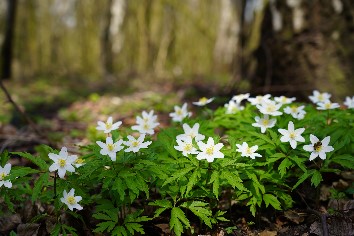
Vipers Bugloss
Eye-catching name, and eye-catching looks, the Viper Bugloss has a bristly stem and very vivid bright blue flowers. It’s great for growing among taller grasses where it can really add interest and stand out. It’s also a great food source for pollinators.
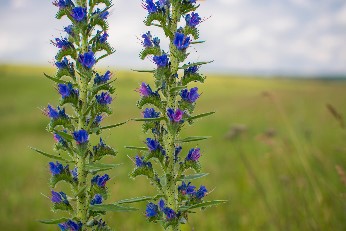
Native British Trees
Here are some of our wonderful native trees but just remember the best times to plant trees is during the autumn and winter months, as they need less watering and are more likely to survive. However, you can plant container grown trees in the spring too.
Alder
Alder trees are fast-growing trees that are great for attracting birds and insects to the garden. They prefer damp to wet conditions which strengthens it, unlike other trees, and, in the winter, attractive cones dangle from the branches.
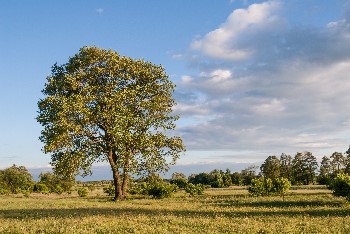
Blackthorn
Blackthorn a great early flowering trees that provide a good source of nectar and pollen for pollinators. The berries which come later are used in sloe gin. The foliage is also great caterpillar food, and you’ll likely see many around the leaves. Birds will nest amongst the dense growth too. This is a great option if you wish to attract wildlife.
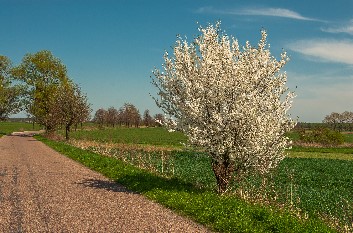
Crab Apple
Crab Apples are great because they offer year-round interest to even the smallest of gardens. They will blossom in the spring, give a lot of autumn colour, and produce fruit that lasts into the winter months. The fruit itself can be eaten too, but is very tarte, and so best eaten after cooked.
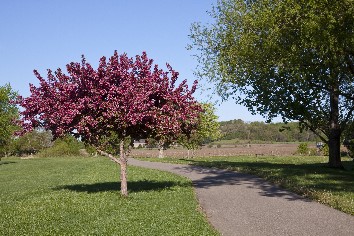
Cherry
Cherry are one of the prettiest trees around. People are drawn to them, and wildlife are too for its lovely white clumps of flowers followed by deep-red cherry fruits, which are edible though can be quite tart. It is known to have a lovely almond like scent too. If you want something to work hard and provide interest for a while in the year, this is one to consider.
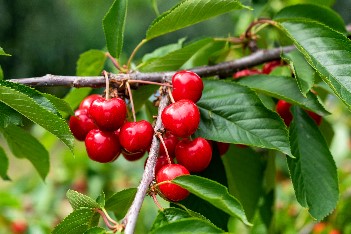
Elder
Elder, also known as Elderberry, is a small tree and shrub found in hedgerows and woods throughout Britain. It’s relatively fast growing, producing lovely white clusters of flowers in summer and fruit later in the summer to early autumn. The fruit is used to make wine and has many medicinal uses, but the seeds and other plant parts are toxic.
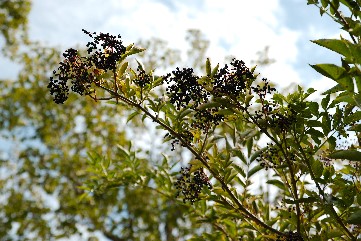
English Oak
The iconic oak is famous for its timber the world over and known for its extremely long lifespan. They attract a lot of wildlife and pollinators too, which is great for the local biodiversity. English oak prefers drier conditions.
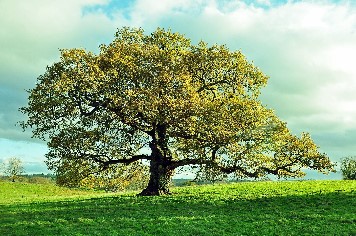
Hawthorn
Hawthorn is also known as the May tree because its flowers typically bloom around this time to signal that spring is turning to summer. The flowers are a white and pale pink colour, and once pollinated will turn into lovely deep red berries. These are thought to provide benefits to the heart and even lower blood pressure. With its plentiful food sources, it’s a great choice if attracting wildlife is your goal.
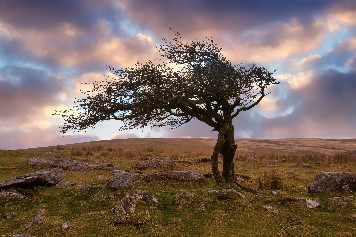
Hazel
The hazel tree is rather unique in that it produces edible nuts – hazelnuts – you can harvest and enjoy. The flowers are pollinated and turn into a fruit, which eventually hardens into the beloved hazel nut. As the nuts are a good food source it is a great choice for attracting wildlife like squirrels, and dormice, though birds will have a go too.

Holly
Sleighbell’s ring, are ya listening? What other tree could be more associated with Christmas time? And no wonder, they are a beautiful sight providing lots of winter interest when many other trees and plants have gone dormant. They provide winter shelter for birds and maintain a plentiful source of food for them through the berries. They’re such a lovely sight on a snowy or cold and crisp winter’s day.

Rowan
Arguably the toughest tree on the list, Rowans can often grow others simply will not. It’s a lovely looking tree that produces bright red berries and will survive in harsher conditions than most other trees will.

Silver Birch
Silver Birch is a popular and stunning tree. Rather uniquely, the outer white bark is shed almost like paper, while the inside remains darker and harder. It will produce lovely catkins, which are flowers, but are quite unique looking as far as flowers go. Wine lovers can take note, the sap of the tree can be tapped and made into a wine!

Willow
No native list of trees is complete without the Willow. It is quite fast growing and there are quite a few to choose from such as the weeping willow, goat, twisted and cricket bat willow – no not a joke. Willow trees are known to improve and stabilise local soil conditions but are very thirsty trees and require a lot of watering. However, if your garden is prone to waterlogging it’s a perfect choice.

Go Native in the Garden
There are so many great reasons to plant more in the garden not least the environmental impacts, and bonuses to biodiversity, but why not be a little more deliberate and plant native British plants and trees? They’ll take to the conditions better than non-native plants and you’ll have some bragging rights that you’ve planted all native. Plus, planted correctly, they are largely trouble free, meaning a lower maintenance garden.






